Abstract
In this paper, I attempt to describe the implications of dynamical approaches to science for research in the experimental study of behavior. I discuss the differences between classical and dynamical science, and focus on how dynamical science might see replication differently from classical science. Focusing on replication specifically, I present some problems that the classical approach has in dealing with dynamics and multiple causation. I ask about the status and meaning of “error” variance, and whether it may be a potent source of information. I show how a dynamical approach can handle the sort of control by past events that is hard for classical science to understand. These concerns require, I believe, an approach to variability that is quite different from the one most researchers currently employ. I suggest that some of these problems can be overcome by a notion of “behavioral state,” which is a distillation of an organism's history.
Keywords: experimental design, tactics of scientific research, replication, dynamical systems, multiple causation, behavioral state, data analysis
Full text
PDF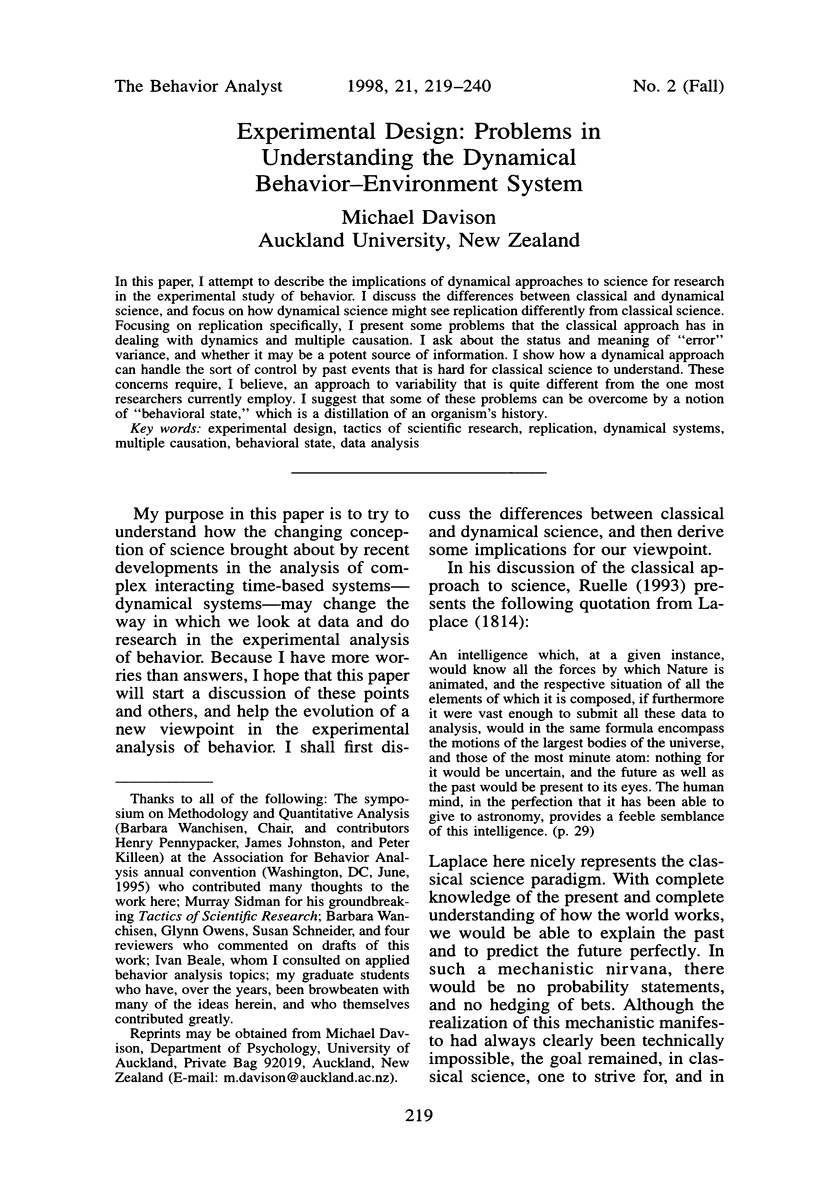
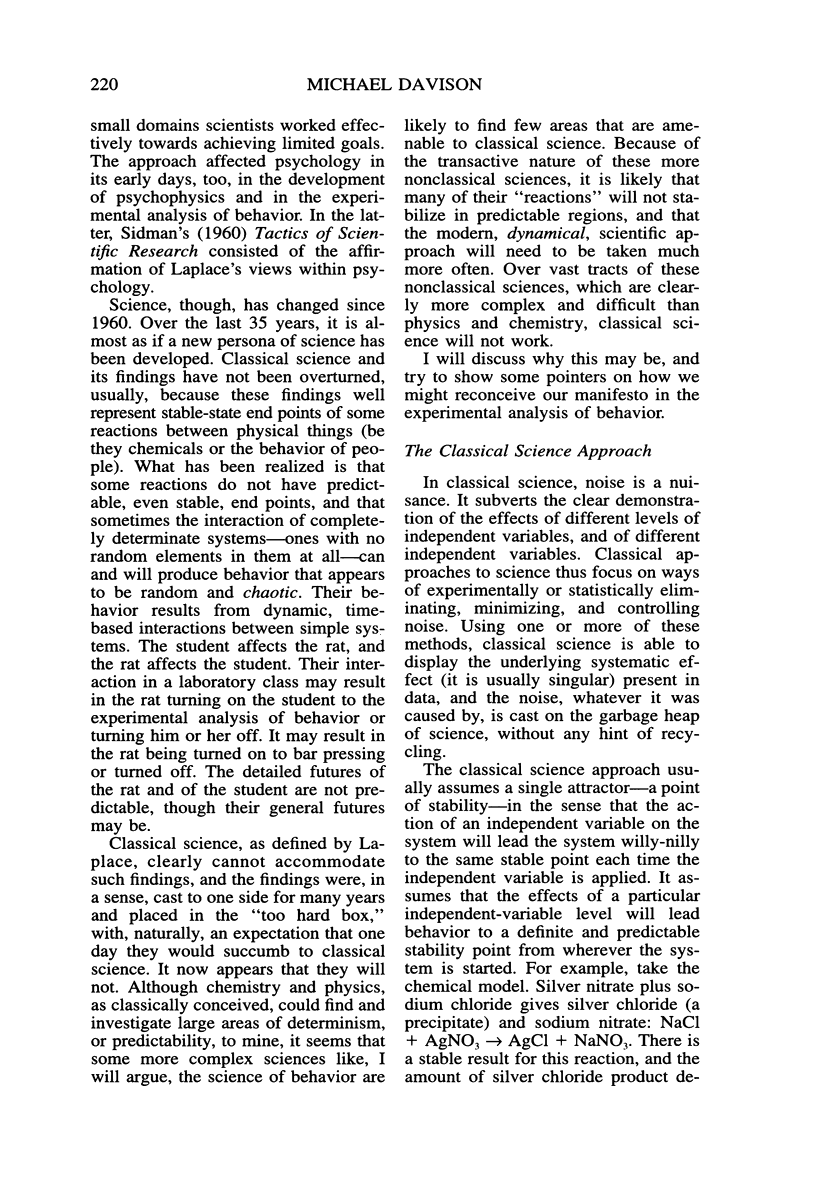
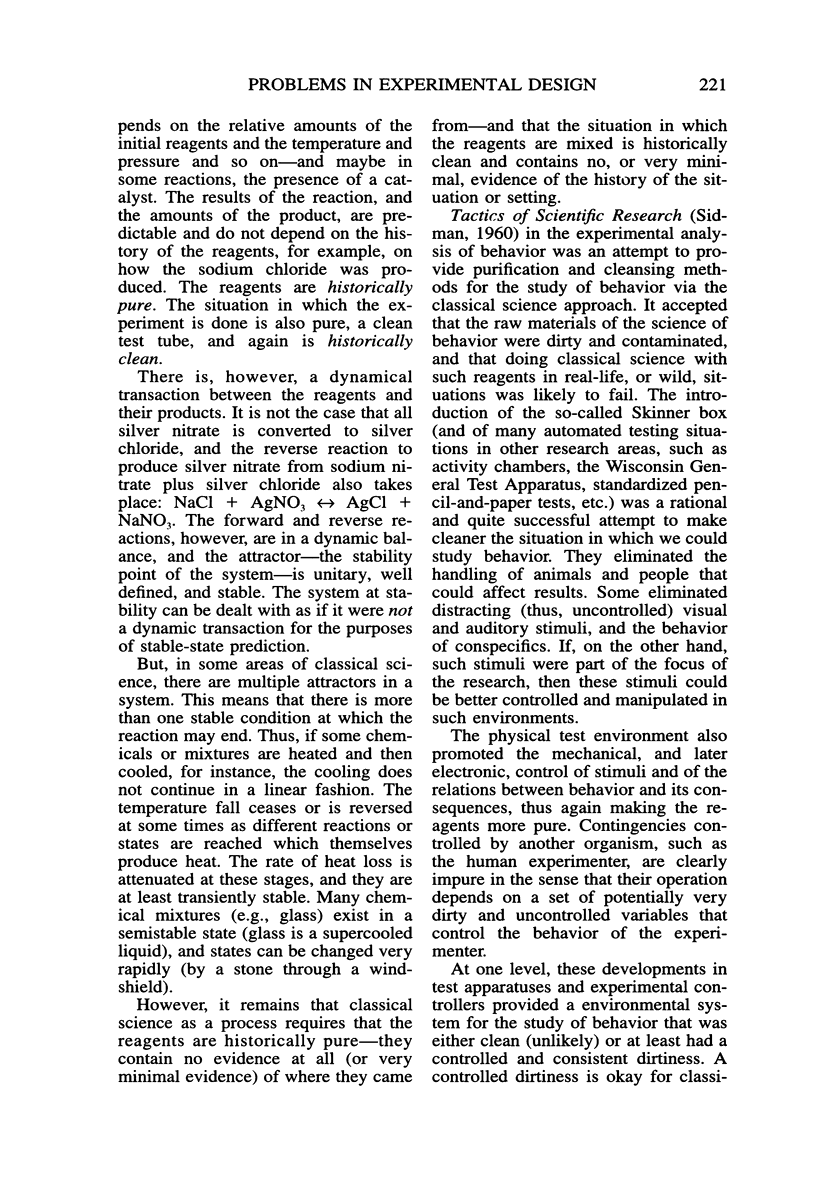
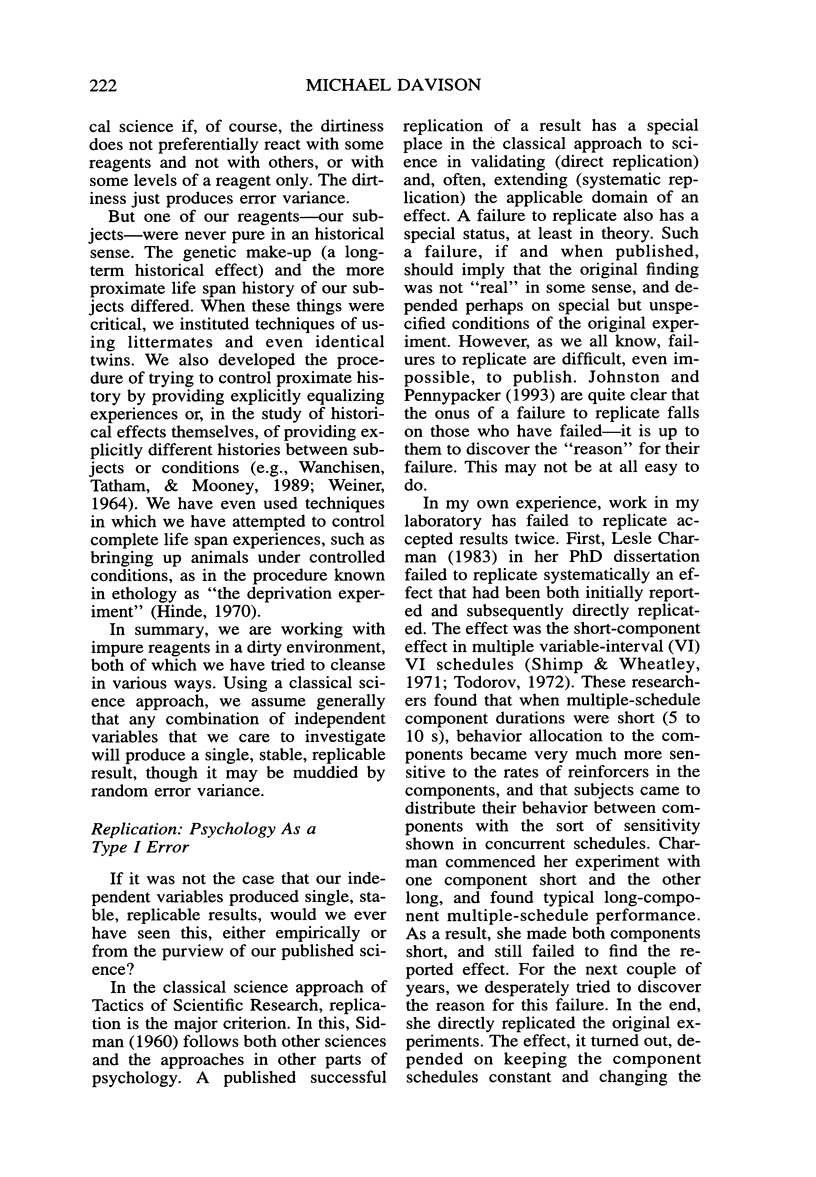
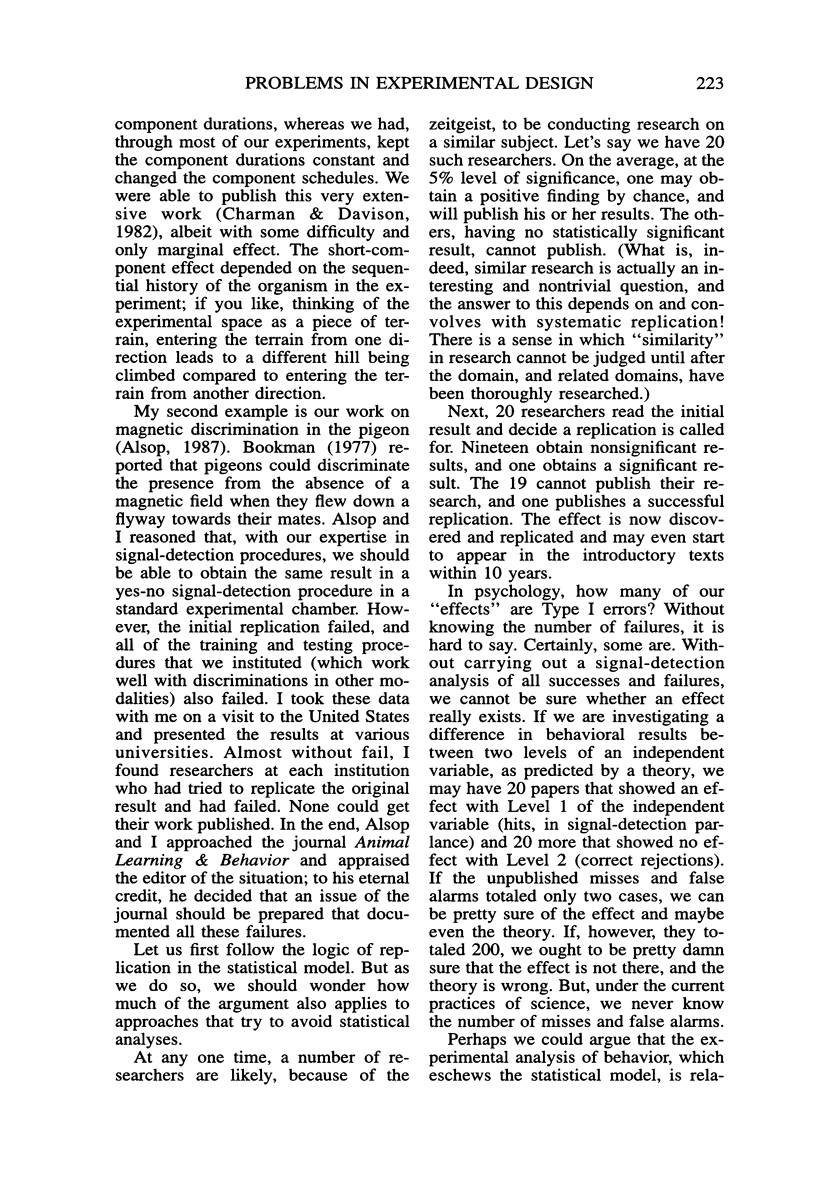
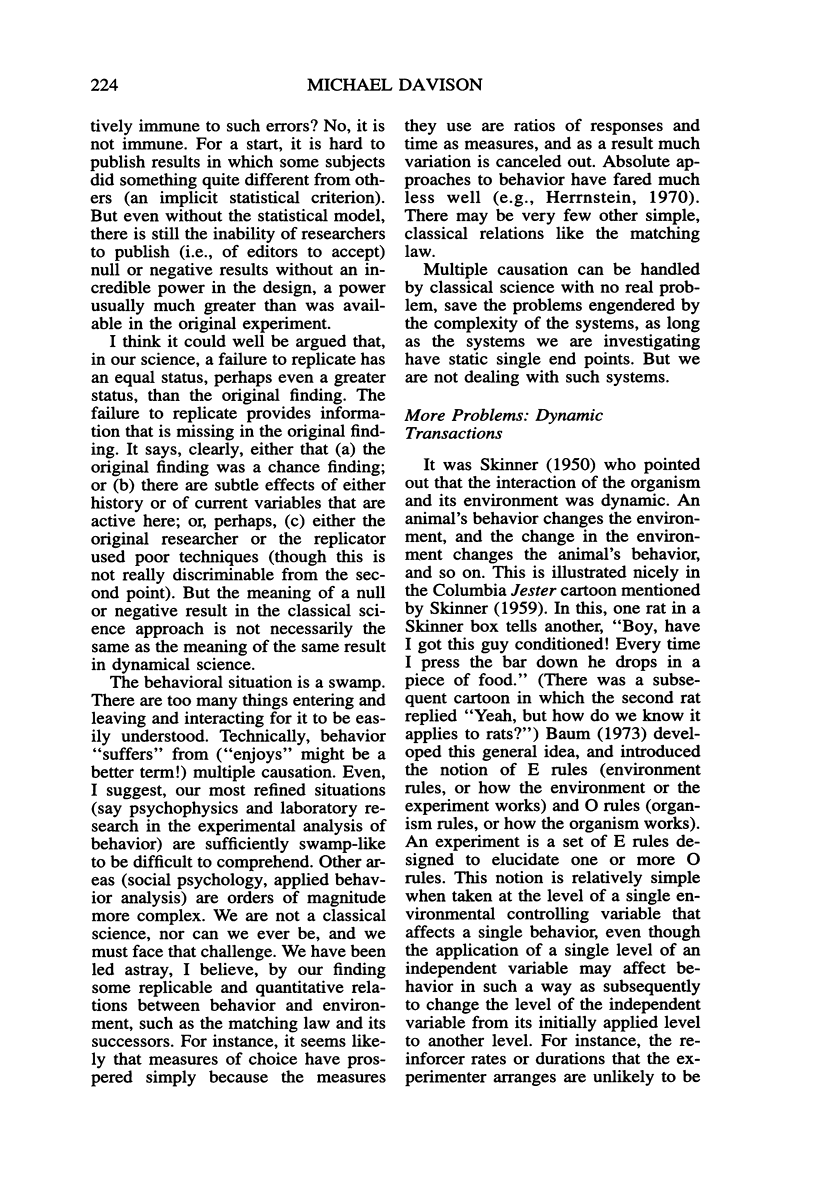
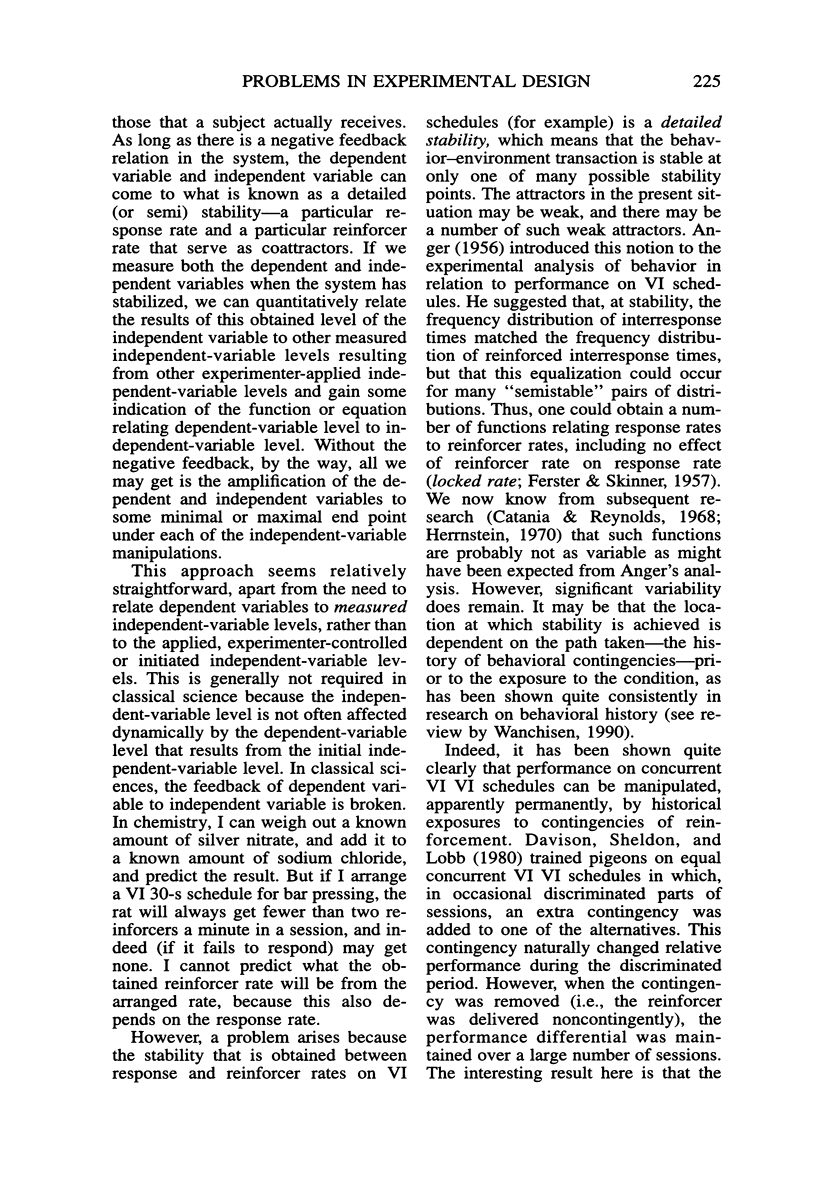
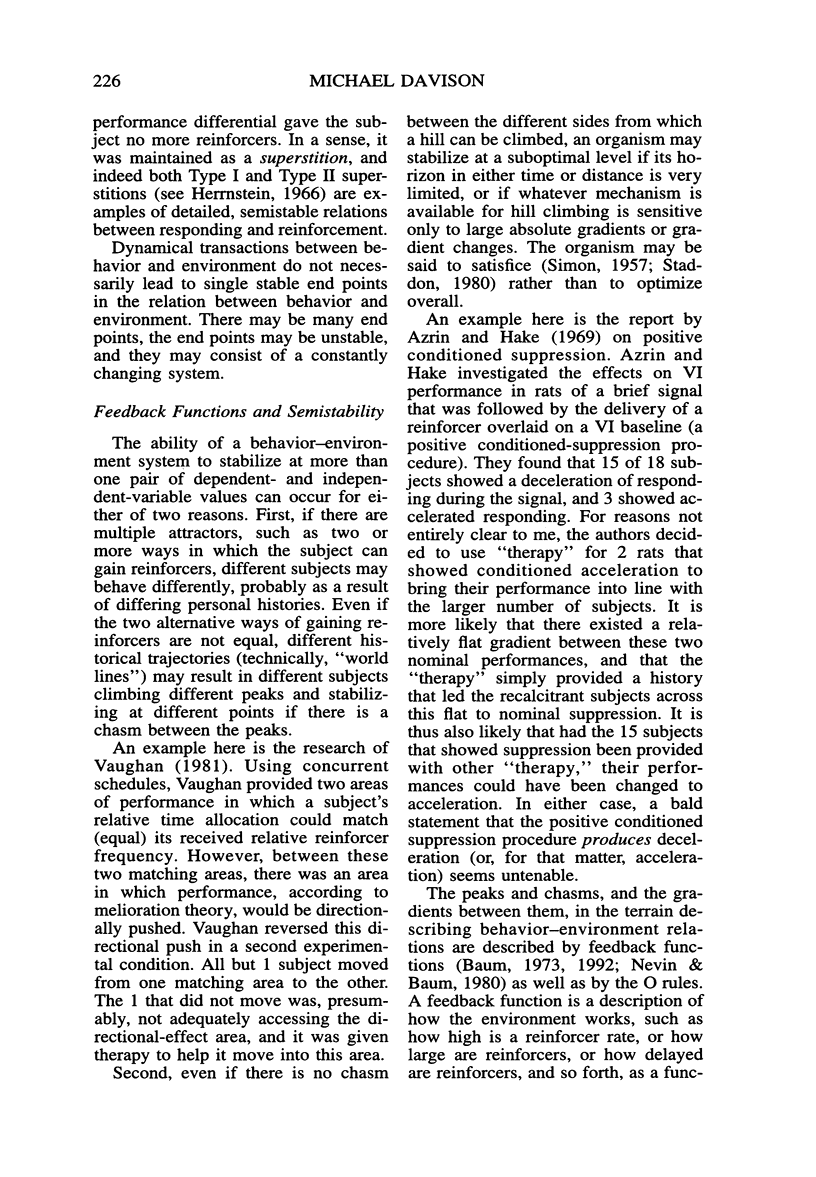
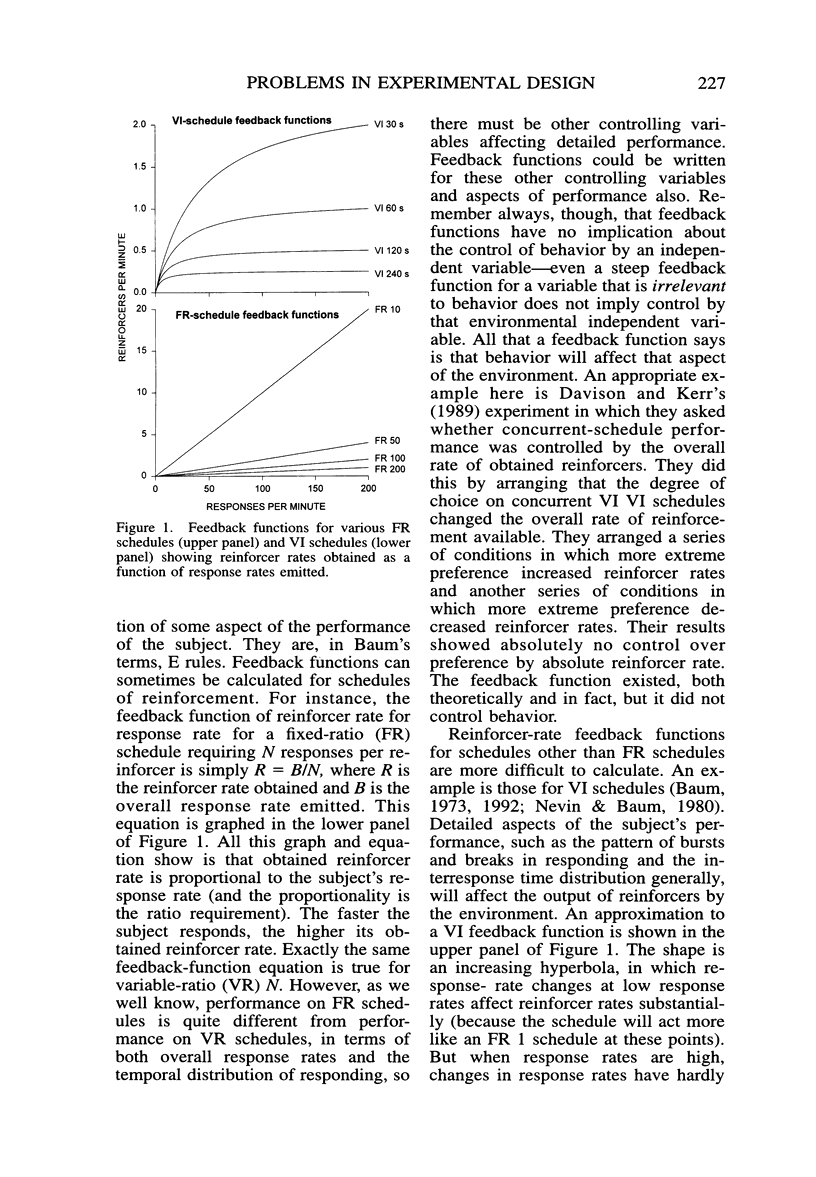
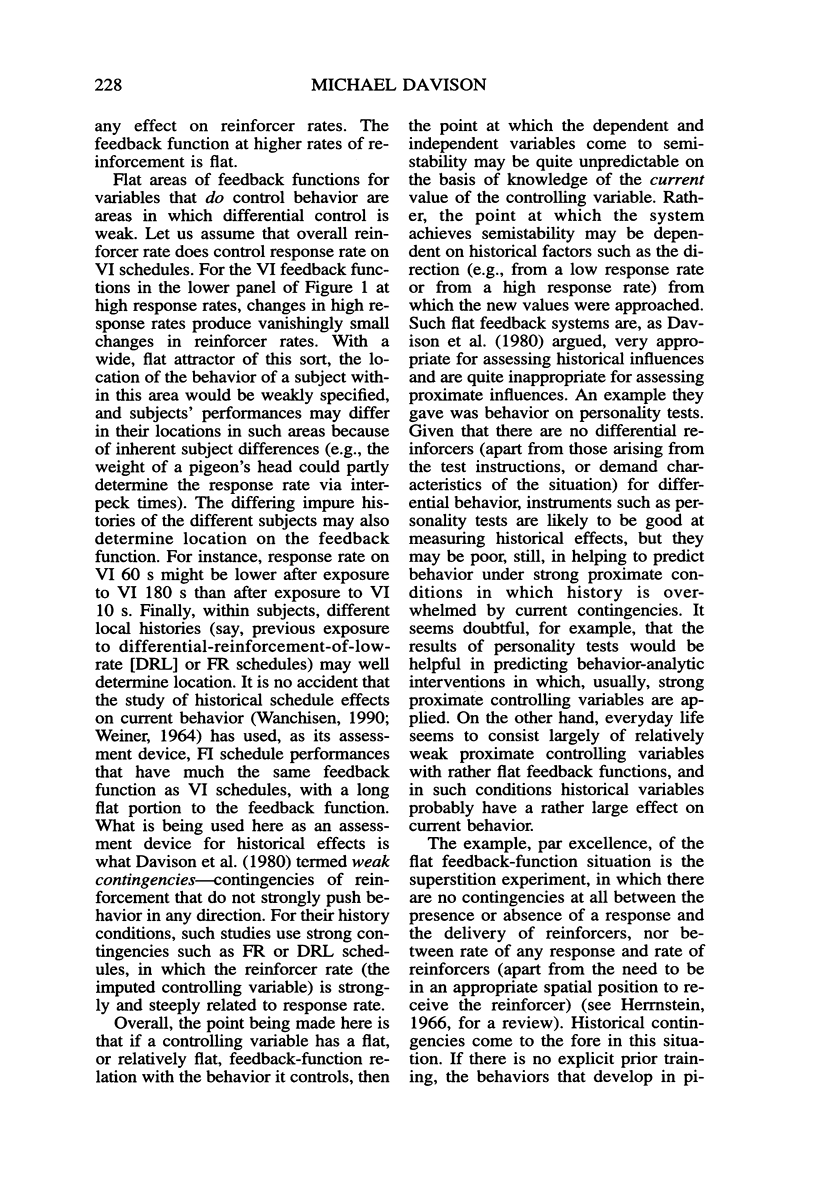
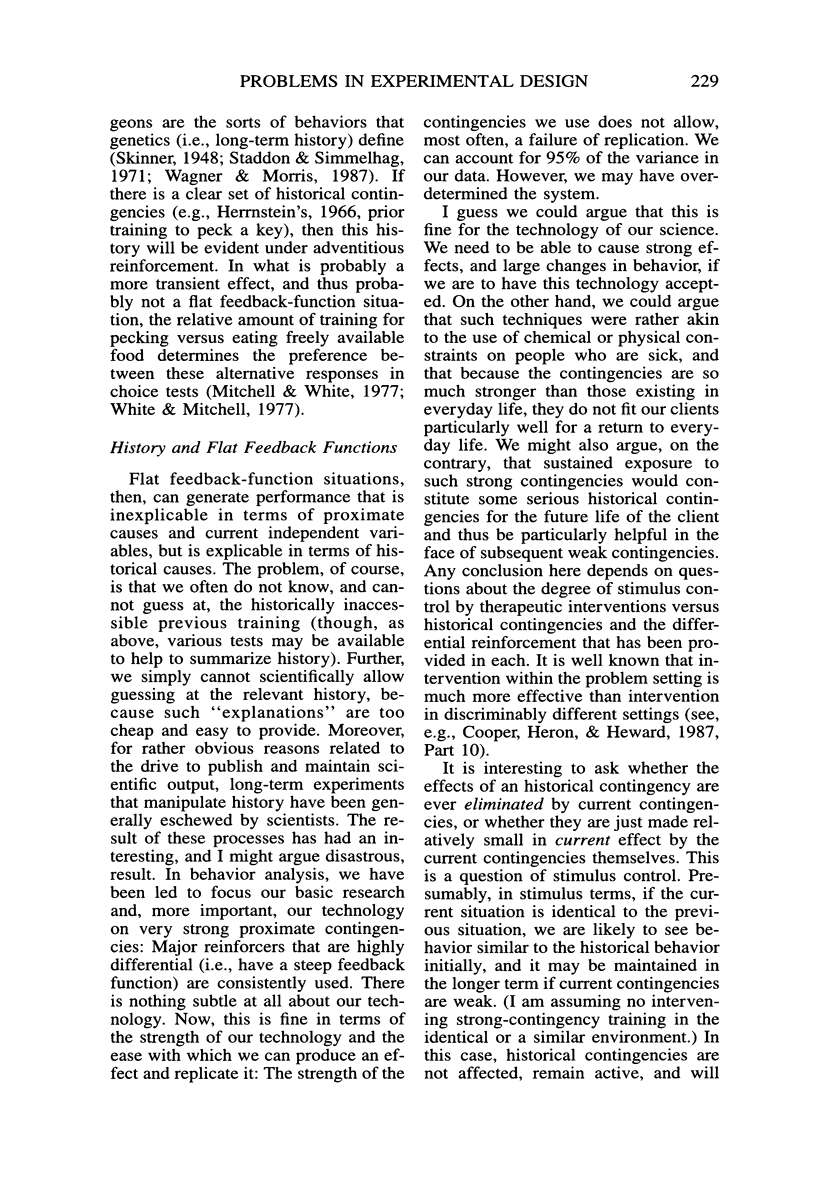
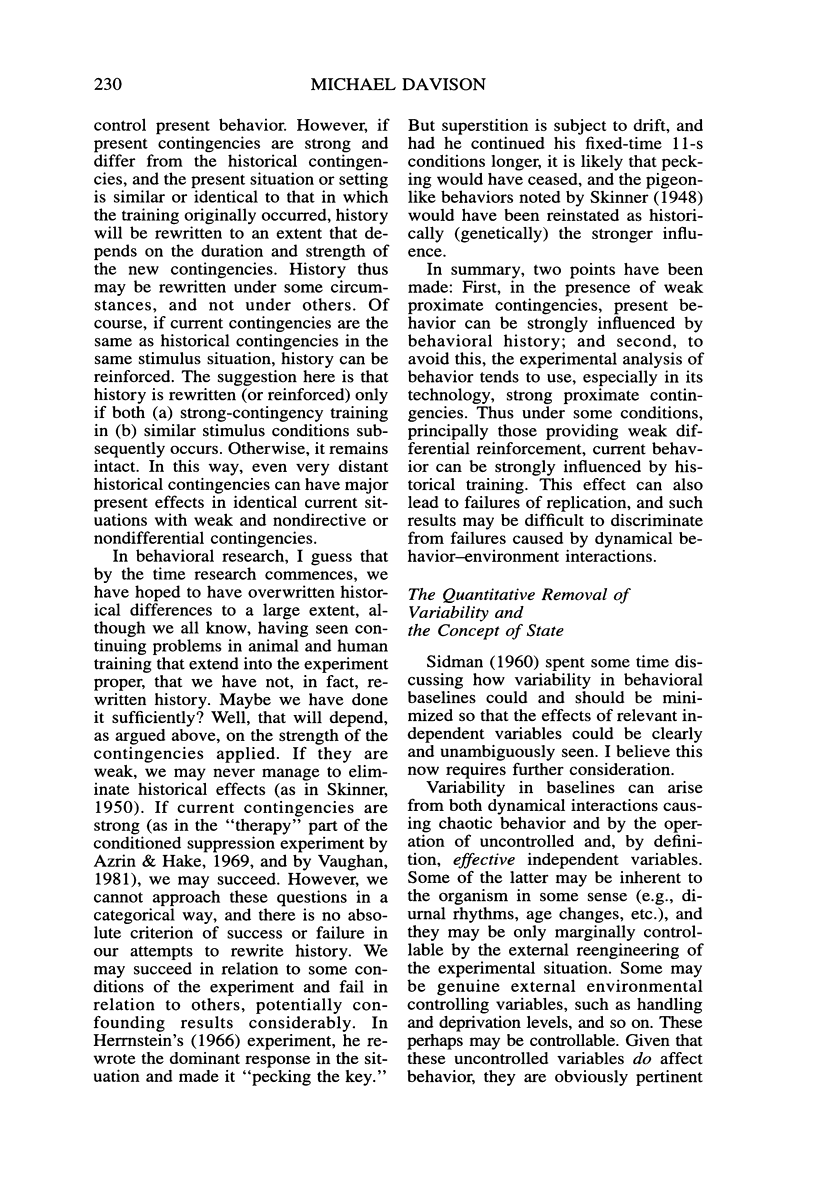
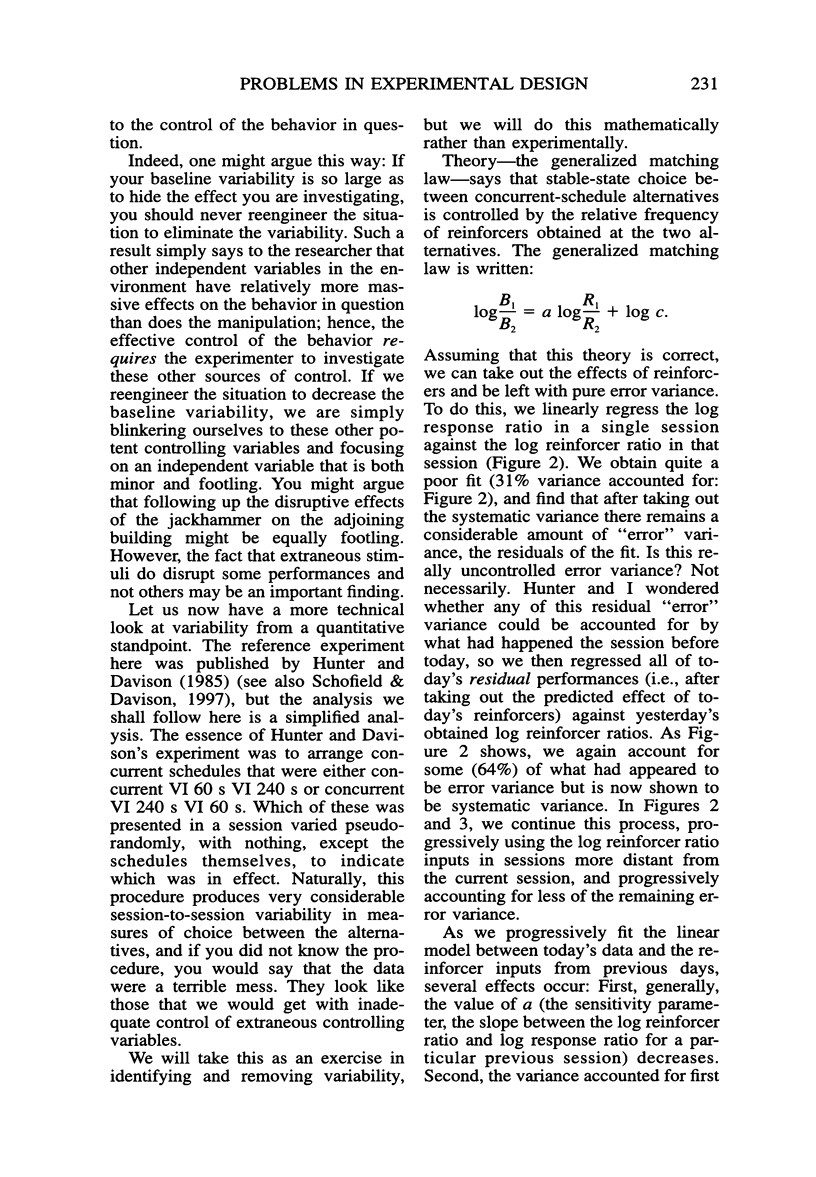
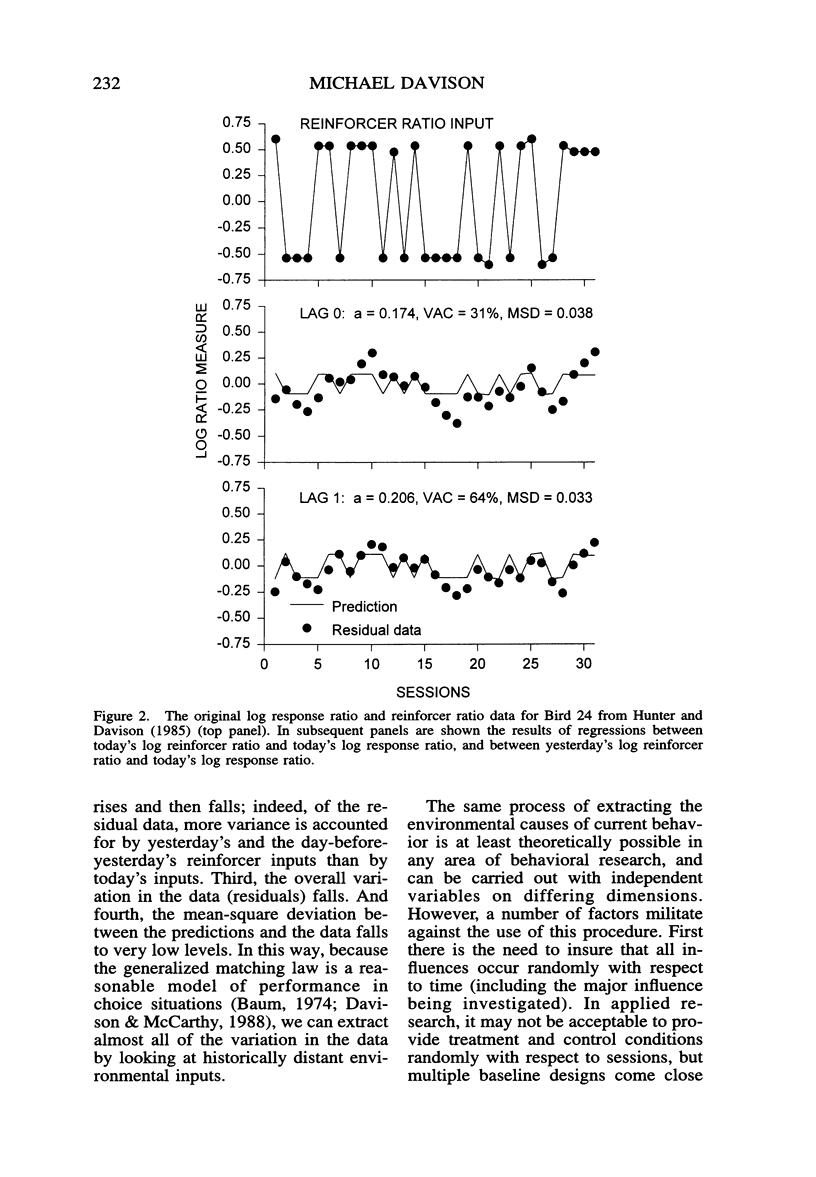
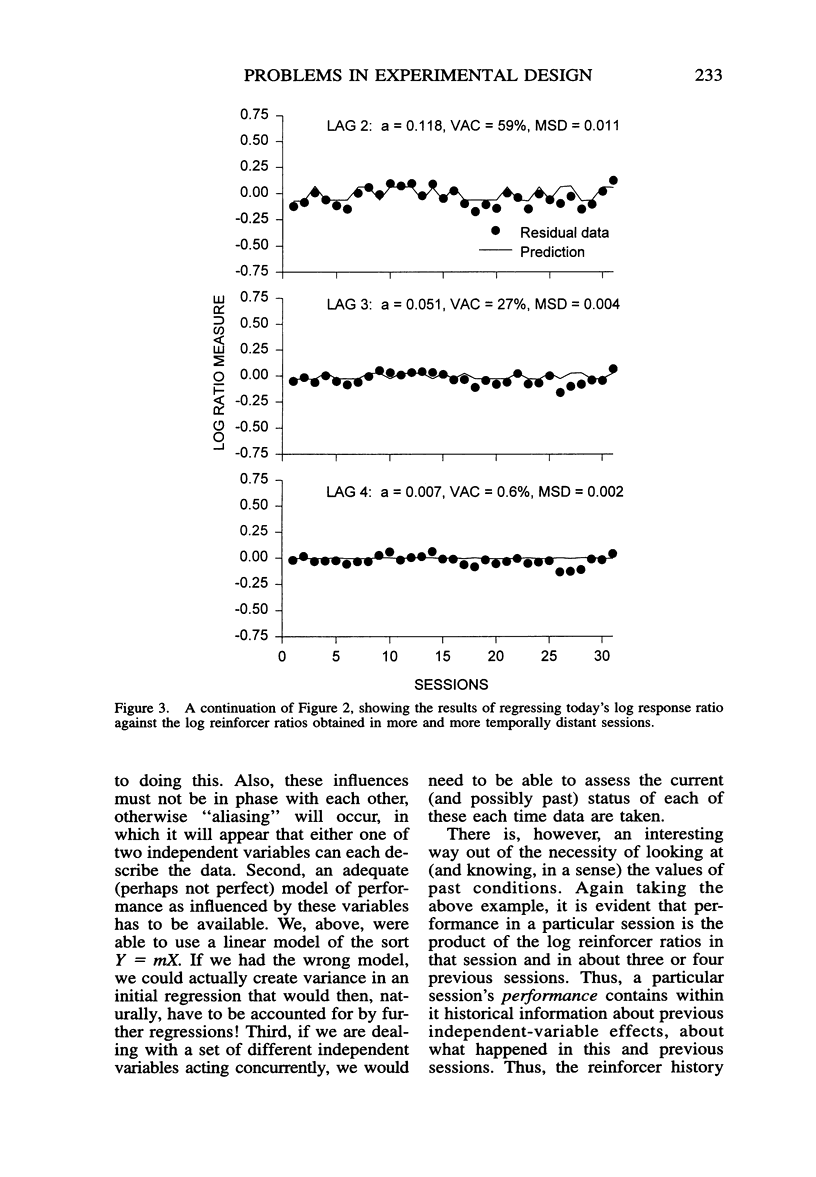
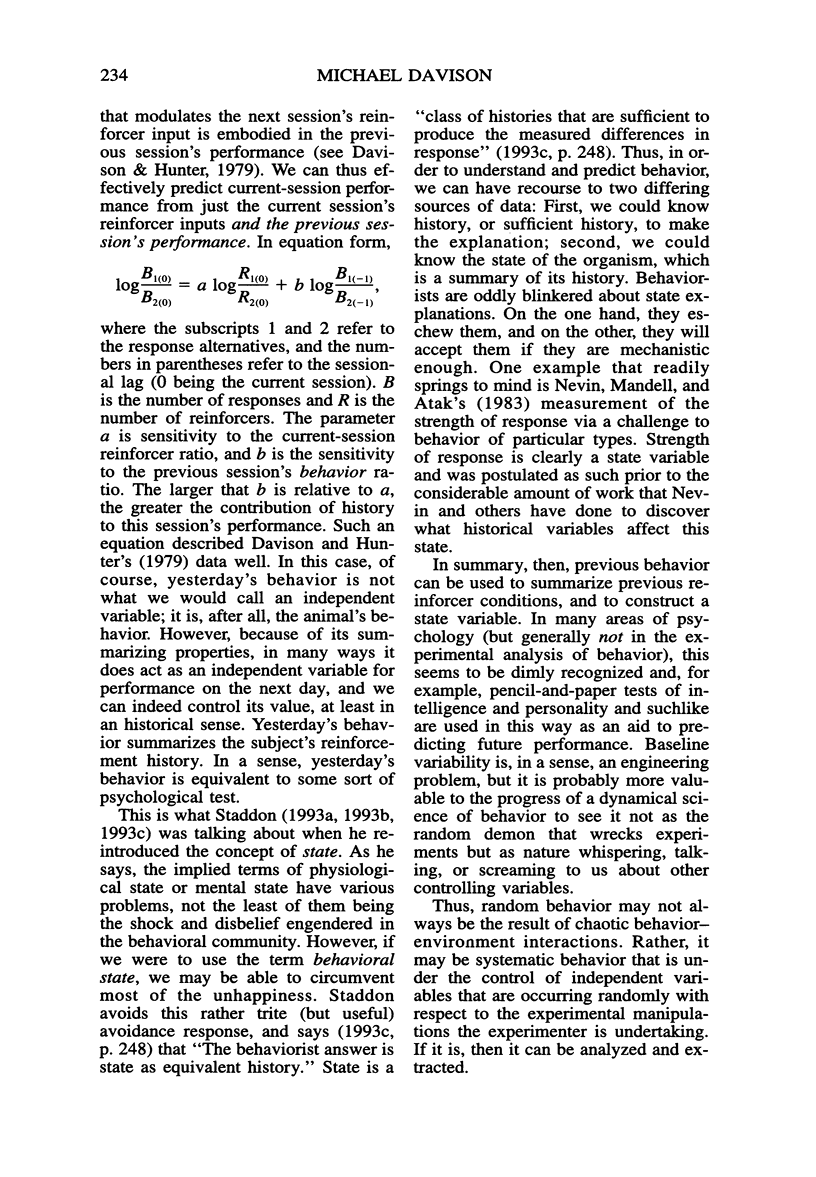
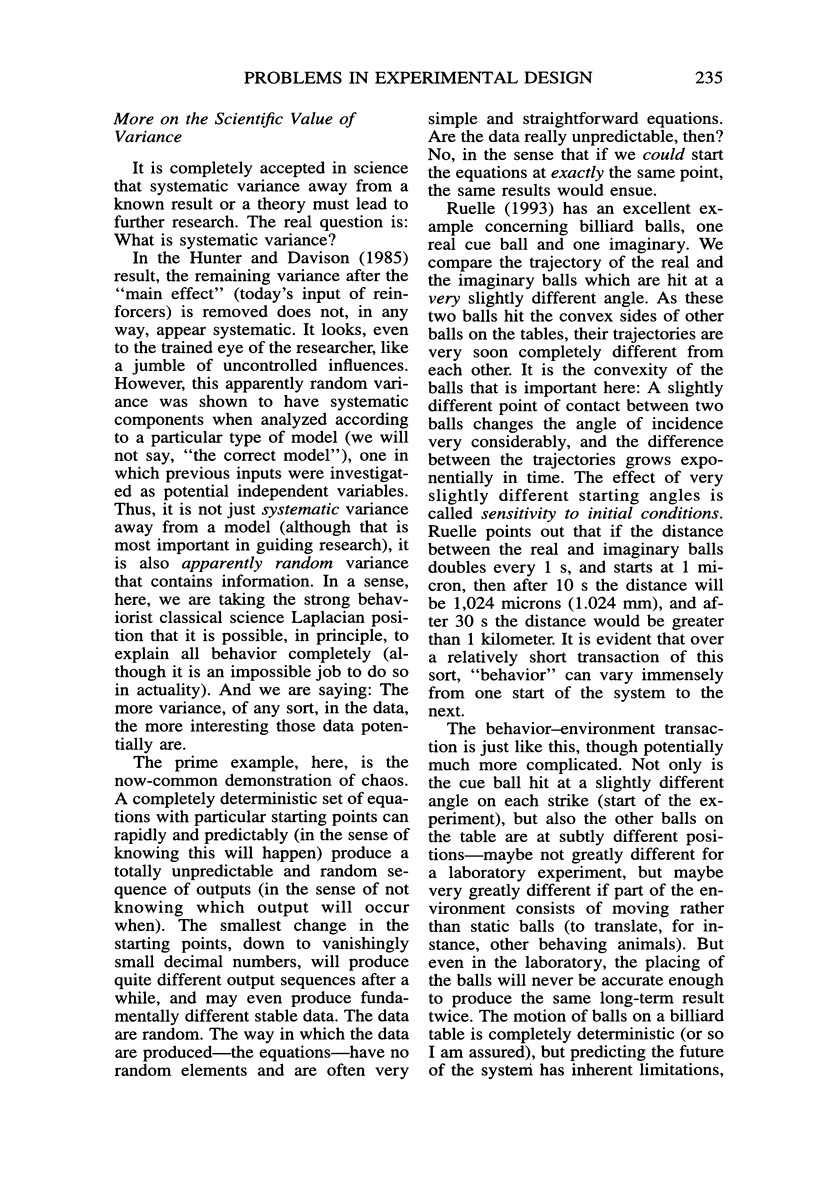
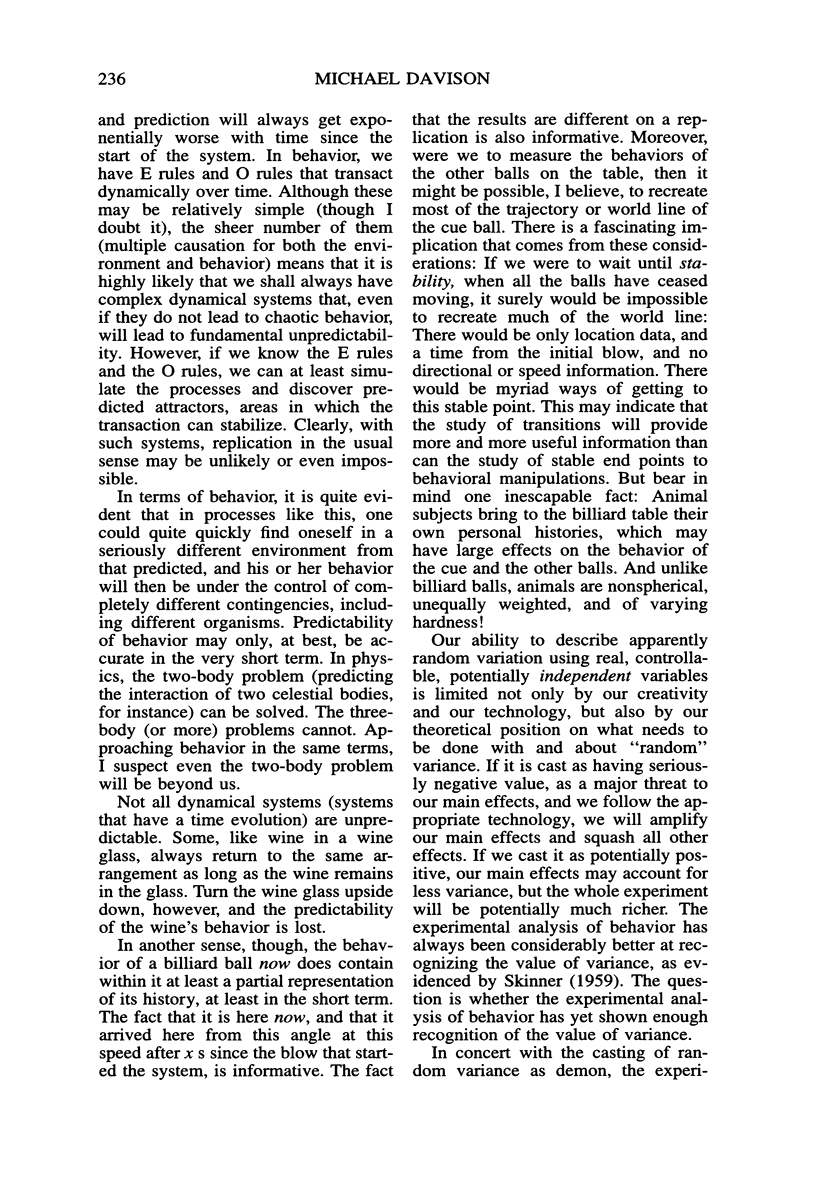
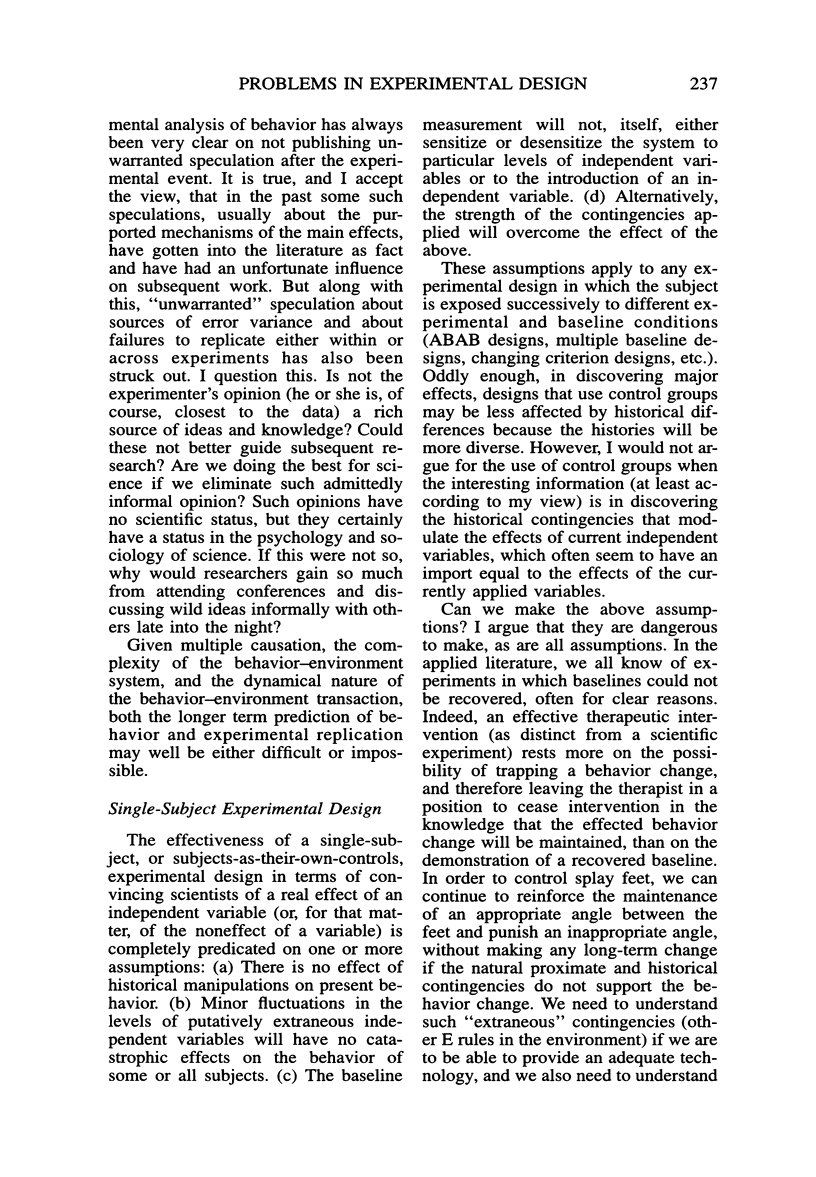
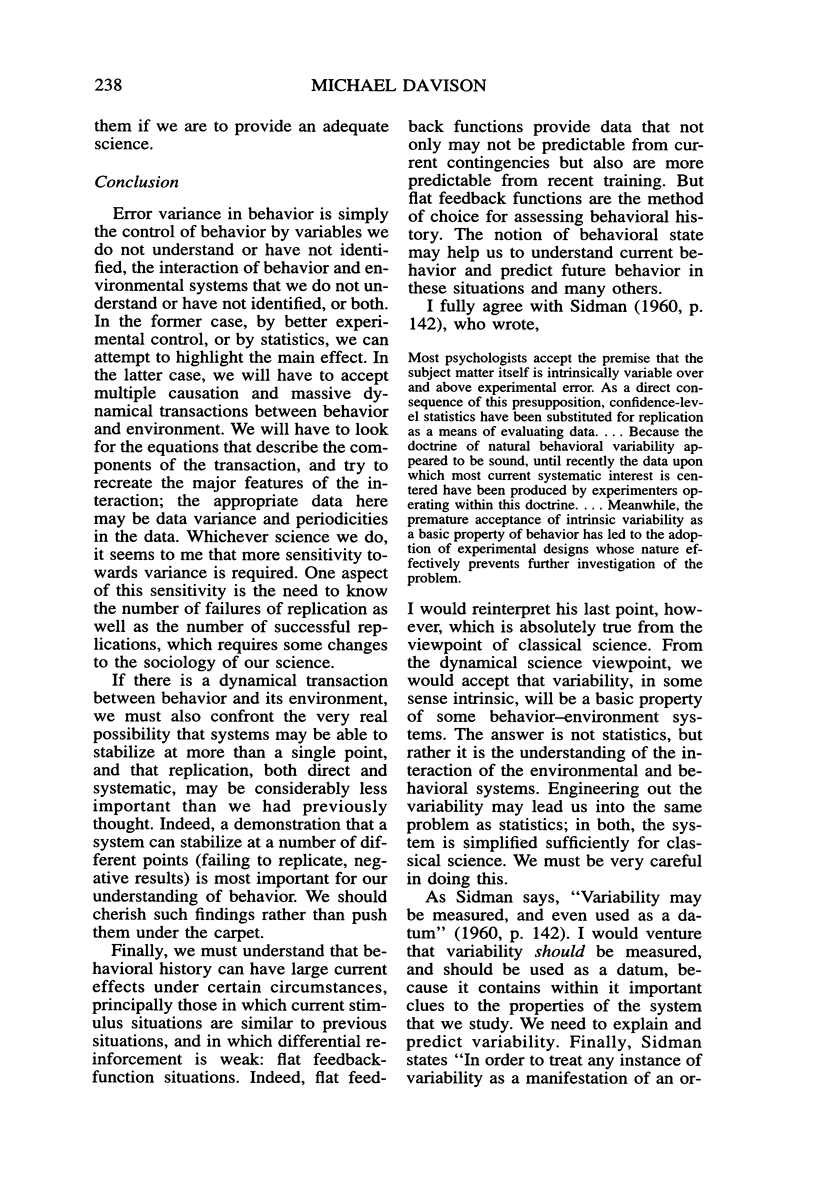
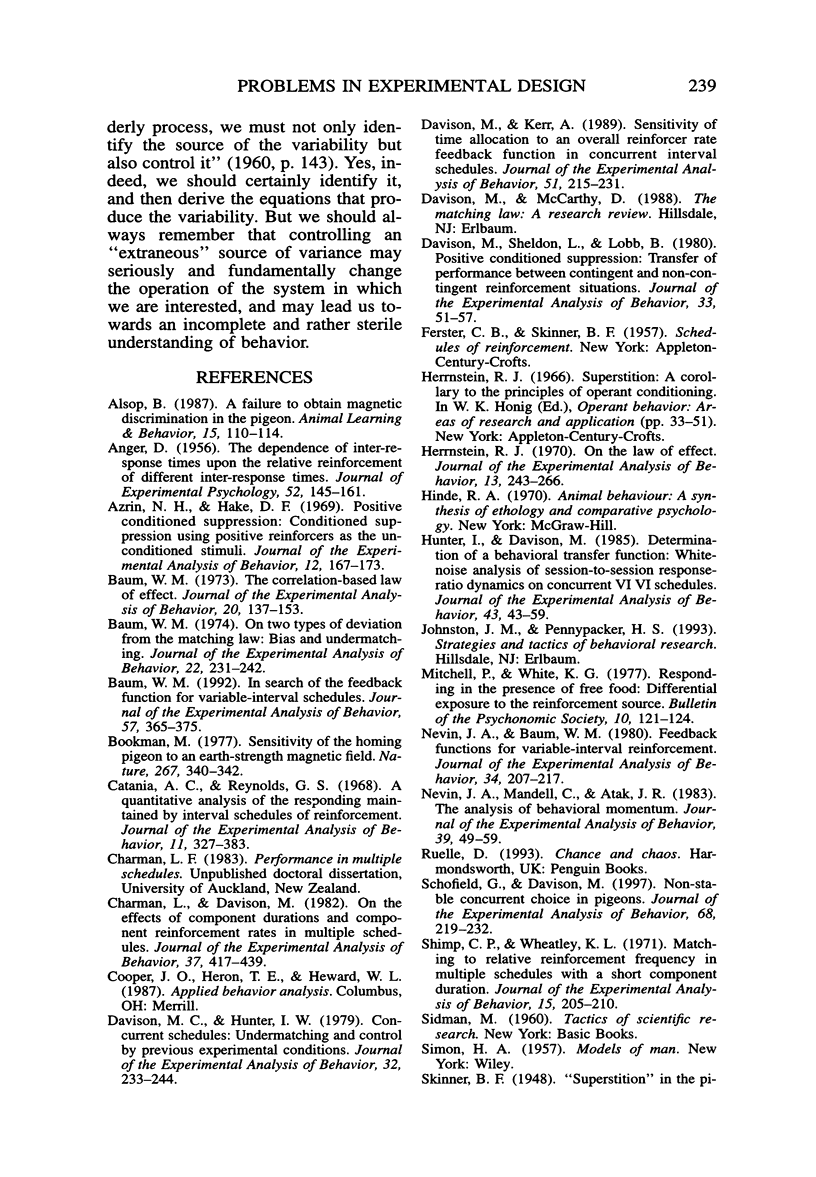
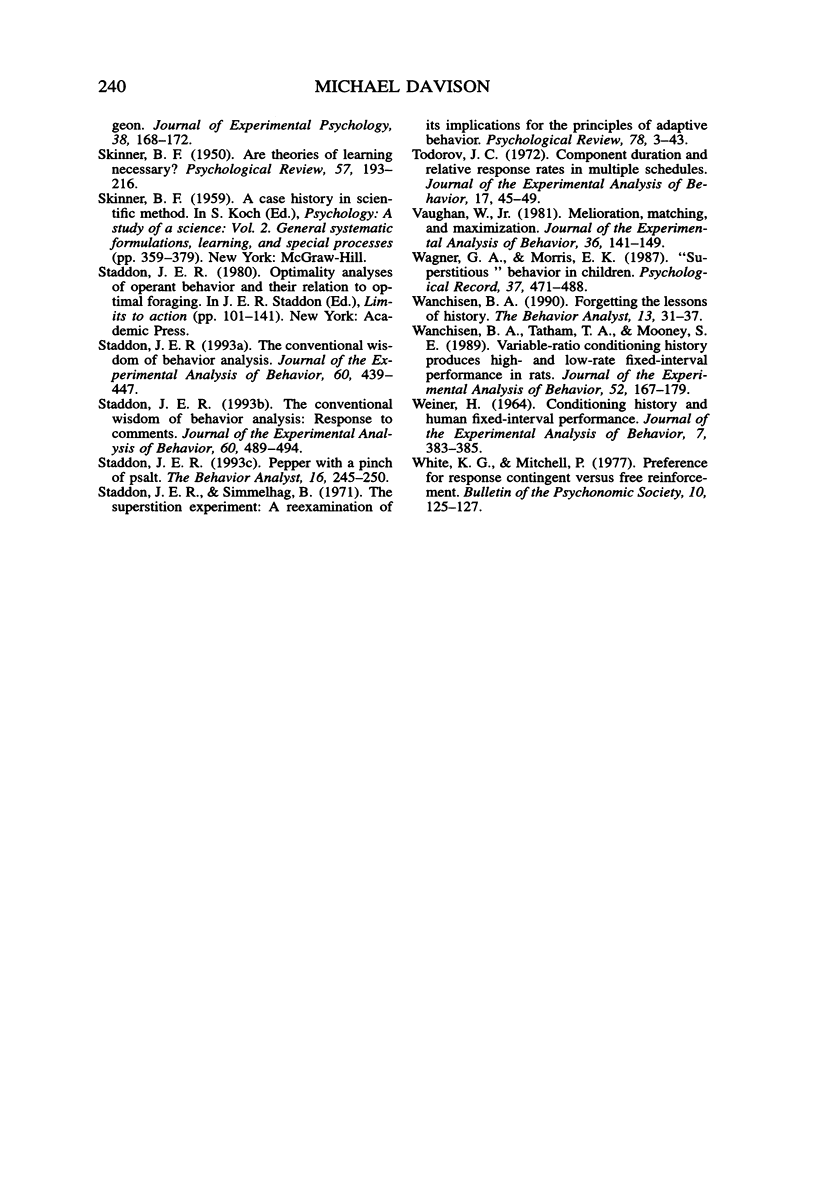
Selected References
These references are in PubMed. This may not be the complete list of references from this article.
- ANGER D. The dependence of interresponse times upon the relative reinforcement of different interresponse times. J Exp Psychol. 1956 Sep;52(3):145–161. doi: 10.1037/h0041255. [DOI] [PubMed] [Google Scholar]
- Azrin N. H., Hake D. F. Positive conditioned suppression: conditioned suppression using positive reinforcers as the unconditioned stimuli. J Exp Anal Behav. 1969 Jan;12(1):167–173. doi: 10.1901/jeab.1969.12-167. [DOI] [PMC free article] [PubMed] [Google Scholar]
- Baum W. M. In search of the feedback function for variable-interval schedules. J Exp Anal Behav. 1992 May;57(3):365–375. doi: 10.1901/jeab.1992.57-365. [DOI] [PMC free article] [PubMed] [Google Scholar]
- Baum W. M. On two types of deviation from the matching law: bias and undermatching. J Exp Anal Behav. 1974 Jul;22(1):231–242. doi: 10.1901/jeab.1974.22-231. [DOI] [PMC free article] [PubMed] [Google Scholar]
- Baum W. M. The correlation-based law of effect. J Exp Anal Behav. 1973 Jul;20(1):137–153. doi: 10.1901/jeab.1973.20-137. [DOI] [PMC free article] [PubMed] [Google Scholar]
- Bookman M. A. Sensitivity of the homing pigeon to an earth-strength magnetic field. Nature. 1977 May 26;267(5609):340–342. doi: 10.1038/267340a0. [DOI] [PubMed] [Google Scholar]
- Catania A. C., Reynolds G. S. A quantitative analysis of the responding maintained by interval schedules of reinforcement. J Exp Anal Behav. 1968 May;11(3 Suppl):327–383. doi: 10.1901/jeab.1968.11-s327. [DOI] [PMC free article] [PubMed] [Google Scholar]
- Charman L., Davison M. On the effects of component durations and component reinforcement rates in multiple schedules. J Exp Anal Behav. 1982 May;37(3):417–439. doi: 10.1901/jeab.1982.37-417. [DOI] [PMC free article] [PubMed] [Google Scholar]
- Davison M. C., Hunter I. W. Concurrent schedules: undermatching and control by previous experimental conditions. J Exp Anal Behav. 1979 Sep;32(2):233–244. doi: 10.1901/jeab.1979.32-233. [DOI] [PMC free article] [PubMed] [Google Scholar]
- Davison M., Kerr A. Sensitivity of time allocation to an overall reinforcer rate feedback function in concurrent interval schedules. J Exp Anal Behav. 1989 Mar;51(2):215–231. doi: 10.1901/jeab.1989.51-215. [DOI] [PMC free article] [PubMed] [Google Scholar]
- Davison M., Sheldon L., Lobb B. Positive conditioned suppression: Transfer of performance between contingent and noncontingent reinforcement situations. J Exp Anal Behav. 1980 Jan;33(1):51–57. doi: 10.1901/jeab.1980.33-51. [DOI] [PMC free article] [PubMed] [Google Scholar]
- Herrnstein R. J. On the law of effect. J Exp Anal Behav. 1970 Mar;13(2):243–266. doi: 10.1901/jeab.1970.13-243. [DOI] [PMC free article] [PubMed] [Google Scholar]
- Hunter I., Davison M. Determination of a behavioral transfer function: White-noise analysis of session-to-session response-ratio dynamics on concurrent VI VI schedules. J Exp Anal Behav. 1985 Jan;43(1):43–59. doi: 10.1901/jeab.1985.43-43. [DOI] [PMC free article] [PubMed] [Google Scholar]
- Nevin J. A., Baum W. M. Feedback functions for variable-interval reinforcement. J Exp Anal Behav. 1980 Sep;34(2):207–217. doi: 10.1901/jeab.1980.34-207. [DOI] [PMC free article] [PubMed] [Google Scholar]
- Nevin J. A., Mandell C., Atak J. R. The analysis of behavioral momentum. J Exp Anal Behav. 1983 Jan;39(1):49–59. doi: 10.1901/jeab.1983.39-49. [DOI] [PMC free article] [PubMed] [Google Scholar]
- SKINNER B. F. Are theories of learning necessary? Psychol Rev. 1950 Jul;57(4):193–216. doi: 10.1037/h0054367. [DOI] [PubMed] [Google Scholar]
- SKINNER B. F. Superstition in the pigeon. J Exp Psychol. 1948 Apr;38(2):168–172. doi: 10.1037/h0055873. [DOI] [PubMed] [Google Scholar]
- Schofield G., Davison M. Nonstable concurrent choice in pigeons. J Exp Anal Behav. 1997 Sep;68(2):219–232. doi: 10.1901/jeab.1997.68-219. [DOI] [PMC free article] [PubMed] [Google Scholar]
- Shimp C. P., Wheatley K. L. Matching to relative reinforcement frequency in multiple schedules with a short component duration. J Exp Anal Behav. 1971 Mar;15(2):205–210. doi: 10.1901/jeab.1971.15-205. [DOI] [PMC free article] [PubMed] [Google Scholar]
- Staddon J. E. Pepper with a pinch of psalt. Behav Anal. 1993 Fall;16(2):245–250. doi: 10.1007/BF03392632. [DOI] [PMC free article] [PubMed] [Google Scholar]
- Staddon J. E. The conventional wisdom of behavior analysis. J Exp Anal Behav. 1993 Sep;60(2):439–447. doi: 10.1901/jeab.1993.60-439. [DOI] [PMC free article] [PubMed] [Google Scholar]
- Staddon J. E. The conventional wisdom of behavior analysis: Response to comments. J Exp Anal Behav. 1993 Sep;60(2):489–494. doi: 10.1901/jeab.1993.60-489. [DOI] [PMC free article] [PubMed] [Google Scholar]
- Todorov J. C. Component duration and relative response rates in multiple schedules. J Exp Anal Behav. 1972 Jan;17(1):45–49. doi: 10.1901/jeab.1972.17-45. [DOI] [PMC free article] [PubMed] [Google Scholar]
- Vaughan W. Melioration, matching, and maximization. J Exp Anal Behav. 1981 Sep;36(2):141–149. doi: 10.1901/jeab.1981.36-141. [DOI] [PMC free article] [PubMed] [Google Scholar]
- WEINER H. CONDITIONING HISTORY AND HUMAN FIXED-INTERVAL PERFORMANCE. J Exp Anal Behav. 1964 Sep;7:383–385. doi: 10.1901/jeab.1964.7-383. [DOI] [PMC free article] [PubMed] [Google Scholar]
- Wanchisen B. A. Forgetting the lessons of history. Behav Anal. 1990 Spring;13(1):31–37. doi: 10.1007/BF03392515. [DOI] [PMC free article] [PubMed] [Google Scholar]
- Wanchisen B. A., Tatham T. A., Mooney S. E. Variable-ratio conditioning history produces high- and low-rate fixed-interval performance in rats. J Exp Anal Behav. 1989 Sep;52(2):167–179. doi: 10.1901/jeab.1989.52-167. [DOI] [PMC free article] [PubMed] [Google Scholar]


